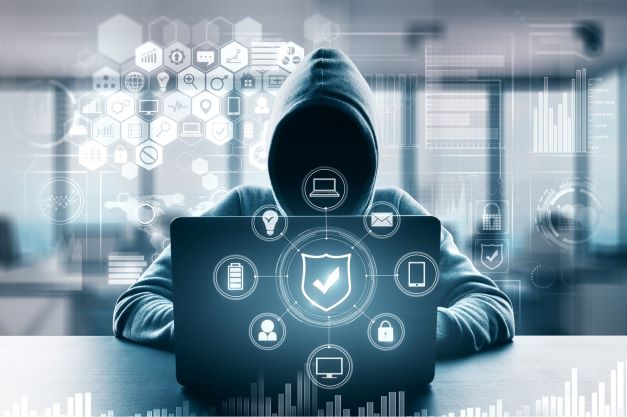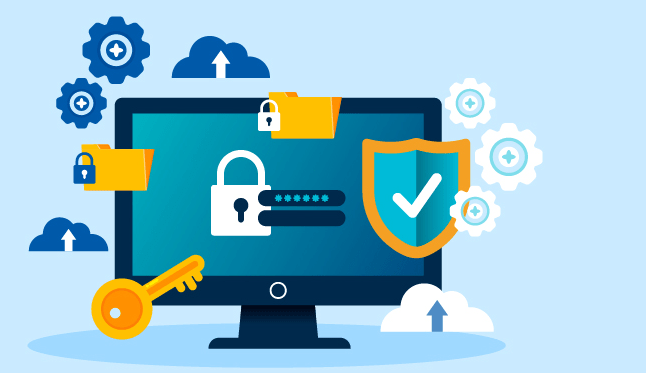Introduction
If you work in an office, chances are you’ve experienced the frustration of having your data stolen, not to mention the embarrassment of telling your boss that a hacker accessed your network. You have to protect your workplace from hackers even if there is no way to prevent them from occurring.
Every day, hackers develop more advanced techniques. They are misusing our Social Security numbers and other personal information, stealing our identities, and even employing malware to infiltrate computers. Here are seven techniques to avoid hacking and gaining access to the network of your business:
Hold Regular Meetings to Educate Workers
Meetings should be interactive, not just a lecture. To avoid hacking, we have to organize regular meetings at least once every month in our workplace. Policies and practices related to IT security are some examples of subjects that may be covered; employee training requirements; new technologies that are being introduced at the workplace (such as cloud computing); any changes in the way employees access their devices or networks that could affect you as an employer—and how best to respond accordingly.

Be Up-To-Date With Security Services
Install up-to-date security software on all devices. Virus protection, browser, and operating system updates are all recommended. Ensure you’re downloading from trusted websites.
Have a Dedicated IT Department
This is a big step to protect your workplace from hackers. Having a dedicated IT department can mean the difference between being hacked and not being hacked, so it’s essential to keep your team up-to-date on best practices and trends in cyber security. Hiring the right people will help you accomplish this—you don’t want someone who has no idea what they’re doing working on your network!
You should also consider finding out whether their skills match what you need: if they don’t have enough experience with security systems, they might make mistakes that could cost you money down the line (or worse yet).

Encourage Employees to be Vigilant
Encourage employees to be vigilant about suspicious emails and URLs. Employees should not open any email attachments that they are not expecting, even if the sender’s name is familiar.
Be wary of links in emails that redirect you to unfamiliar websites or ask for personal information like your password (even if it looks legitimate). Virus protection, browser, and operating system updates are all recommended.
If an employee receives an unsolicited email from someone they do not know well, report it immediately so IT can take action on behalf of your company to avoid hacking.
Offer Free “Cybersecurity Lunches” for Your Employees
If you want to get your employees interested in cybersecurity, consider hosting a lunch. A cyber lunch can be held at a conference room or restaurant; it doesn’t have to be just one day. You could even do them biweekly or monthly, depending on what you need from your employees.
A cyber luncheon is an opportunity for everyone to gather together and talk about their experiences with computer security and learn new ways to protect your workplace from hackers It’s also an excellent way for managers who may not know much about computers (or don’t have time) but still want everyone working together toward common goals like ensuring that none of our data gets stolen or compromised!
Educate Employees on How Hackers Get Access to Their Data And How They Can Prevent it
To protect your data, educate employees on how hackers access their data and how they can prevent it. Hackers hack into computers, phones, and other devices through vulnerabilities in the software or network that provides access.
They also use phishing scams to gain unauthorized access to accounts. Once inside, hackers can steal personal information, including credit card numbers and Social Security numbers (SSNs), use malware, spyware, and viruses that track browsing behavior so they know when you log in online; send spam messages with links leading to malicious websites; steal passwords or PINs from employees’ mobile devices by installing an app onto them; install malware remotely onto a computer without its owner knowing about it until after someone uses it for malicious purposes later on down the road—these are just some examples of what cyber criminals do when they gain physical access within an organization’s network perimeter!
Implement Strong Passwords And Two-Factor Authentication
Passwords are the first step in protecting your work from hackers. Many people use the same password across multiple accounts, which makes it easy for a hacker to crack their way into your payment information or other sensitive information by using brute force attacks on various sites. Even if you use different passwords for each of your online accounts (like Gmail or Facebook), hackers can easily access all of them at once if you do.
To prevent this from happening:
For any website and application that saves sensitive information about you or has access control features like two-factor authentication, use a different password (2FA). This will help keep hackers at bay while ensuring no one else gets access to these accounts under pretenses. Ensure that passwords aren’t shared between employees within an organization, so no one else has access, either!
Take Steps to Protect Your Workplace From Hackers so Your Business Can Thrive
As the number of cyber-attacks increases, so do the risks for businesses. Hackers can steal data from your company and use it for their benefit. The easiest method to stop this from happening is to take the following actions:
Use strong passwords and two-factor authentication
Educate workers on how hackers get access to their data and how they can Avoid Hacking.
Conclusion
Any business owner who cares about their business should be concerned about the growing number of cyberattacks. The best way to protect your company is by taking steps now so that you are well-prepared when a hack occurs. These suggestions should be helpful to you as you draught a cybersecurity plan for your company.
You can also click on the button below for more information. Visit our blog and YouTube Channel for more details.
Unauthorized access to a system or network is called hacking. A hacker is a person who is engaged in this activity. They engage in non-harmful actions on the computer, including data theft, invasion of privacy, and more.
Website hacking, Network hacking, Email hacking, Password hacking, Computer hacking, and many more.
Protecting networks, devices, and data from harm, loss, or unwanted access is the practice of cybersecurity. Cybersecurity defends digital systems and their users from digital perils, just as physical security shields buildings and the people inside them from numerous physical threats.
A computer virus is a form of malware, or malicious software, that travels between computers and corrupts software and data. Computer viruses interfere with systems, lead to severe functional problems, and cause data loss and leakage.



